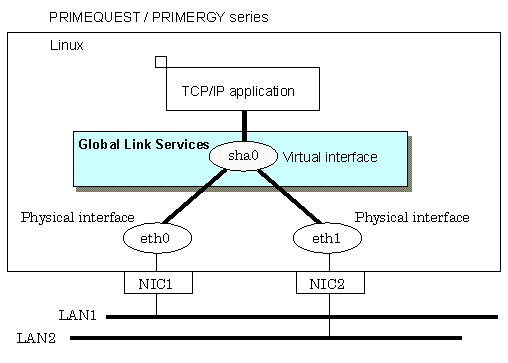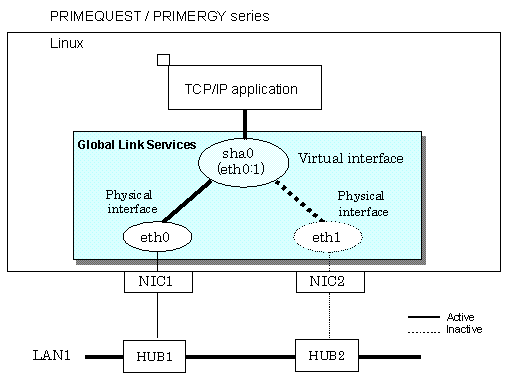

| PRIMECLUSTER Global Link Services Configuration and Administration Guide: Redundant Line Control Function 4.2 (for Linux) |
Contents
Index
 
|
| Chapter 1 Overview |


Redundant Line Control function consists of the following components:
|
Main unit |
PRIMEQUEST, PRIMERGY |
|
|
NIC (Network Interface Cards) |
The following Fujitsu adapters or cards can be used: |
|
|
Switch/HUB (NIC switching mode) |
IP address information must be configured for switch/HUB, e.g. switch/HUB with SNMP agent |
|
|
Operating system (OS) |
For details about the operating system supported by the redundant line control function, see the GLS Installation Guide. |
|
|
Interfaces |
Physical interface |
Generated by each NIC. |
|
Tagged VLAN interface |
Interface (e.g. eth0.2, eth1.3) that is generated through tagged VLAN (IEEE 802.1Q). |
|
|
Virtual interface |
Generated through redundant line control (e.g. sha0 and sha1). |
|
|
Network number |
Fast switching mode |
A different network number is assigned to each physical interface and a virtual interface. |
|
NIC switching mode |
Only one number is assigned to each network. |
|
|
IP address |
Fast switching mode |
An IP address must be allocated to each physical interface and a virtual interface. If there are two or more virtual interfaces, an IP address will be allocated to each virtual interface. Both IPv4 address and IPv6 address can be used. |
|
NIC switching mode |
An IP address must be allocated to each logical interface. If there are two or more logical interfaces, an IP address will be allocated to each logical interface. Both IPv4 address and IPv6 address can be used. |
|
Contents
Index
 
|